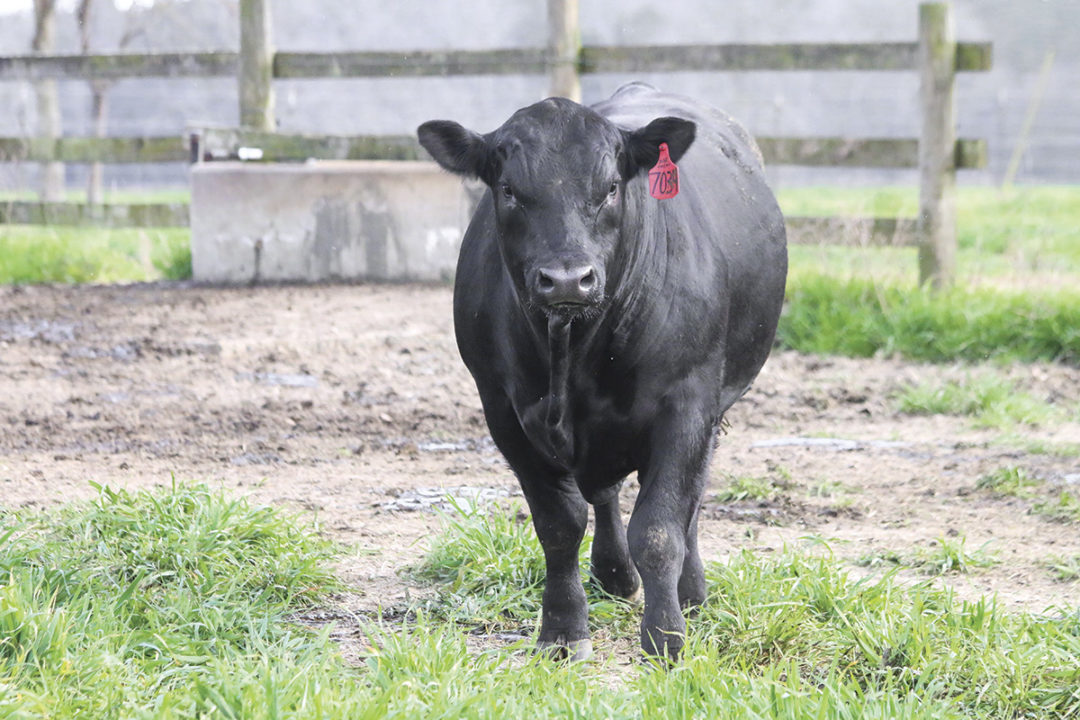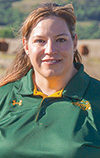A long-time practicing North Dakota veterinarian once said, “Most diseases in our herds have been bought and paid for.” Unfortunately, this is true.
Many diseases enter our herds when we acquire new animals and commingle them with our herd. In a cow-calf operation, this often occurs with the addition of new herd sires, replacement females or calves you intend to graft on a cow who lost her calf. Disease can also be introduced when using colostrum from other operations. These introductions provide opportunities to introduce disease into your herd.
Biosecurity is a set of management practices that prevent diseases from infecting a herd. Although biosecurity is often related to foreign animal diseases, it is also very useful in preventing the spread of common diseases found in U.S. livestock operations, such as bovine viral diarrhea (BVD) and pinkeye.
Producers often have the preconceived notion that a biosecurity plan is expensive and hard to implement. However, for most operations, this is not true. Biosecurity should be considered as a part of everyday management.
Making a biosecurity plan
Biosecurity plans will be unique for every operation. Producers should develop biosecurity plans for their operations with the input and assistance of their veterinarians. Plans should establish goals for disease prevention on-farm and should consider the cost-effectiveness of the operation’s biosecurity plans. Cost-effectiveness will depend on the risk of disease introduction, the associated costs of the disease once established in a herd and the amount of disease risk, production loss and death loss a producer is willing to tolerate compared to costs of implementing a biosecurity plan.
Before an effective biosecurity plan can be developed, how diseases are spread needs to be understood. Diseases can be spread “directly” from an infected animal to a susceptible animal or “indirectly” from an infected animal to an object, feedstuff or equipment, and then to a susceptible animal. Diseases are primarily spread in the following ways: direct contact, aerosol, oral, reproductive, on vehicles and contaminated objects, vectors (including insects, animals and humans) and fomites, like contaminated feed, water and soil.
Isolation
The North Dakota State University Extension Service suggests isolating new livestock for a minimum of three weeks before introducing them to your herd. This provides time to observe any onset of illness, test for diseases, vaccinate and adjust nutrition. The isolation area should be set up to prevent the new arrivals from sharing feed and water and from not having nose-to-nose contact with the existing herd.
Testing
Testing of incoming livestock can be useful in decreasing the risk of introducing novel diseases into the herd. Your herd veterinarian should be consulted on which diseases to test for and which tests to use.
Vaccination
Vaccination of the resident herd and incoming animals can be an effective way to minimize the risk of disease transmission when mixing livestock of different disease statuses. Vaccination is typically the most common way veterinarians and producers attempt to decrease disease risk. However, it is important to understand that vaccines are only one part of the puzzle, and they should not be considered the only component of a herd biosecurity plan. Remember to vaccinate your bulls in accordance with your herd health plans, too.
Step-down nutrition
Yearling and 2-year-old bulls, in particular, will benefit from step-down nutrition before being commingled with the herd. Most bulls have been developed and grown on a high-energy diet. They will need to have their diets adjusted in a step-down fashion from a high-energy diet to a high-forage diet to maintain breeding soundness. Utilizing this important management step will help keep your new bull healthy while ensuring that his reproductive performance is maximized.
Sanitation
Sanitation can decrease diseases being introduced into herds on shoes, clothing, equipment, vehicles, veterinary equipment, used needles, artificial insemination tools and feeding equipment. There are verified cases of diseases being introduced into herds of livestock by all these items. It is important to remember that before disinfection can be effective in decreasing disease transmission, organic matter such as soil, mud, manure and blood must be removed.
The following general biosecurity practices are recommended to be adopted:
- Maintain good fences. Good fences make good neighbors and can decrease unwanted commingling of livestock.
- Disinfect reusable equipment, including feed equipment that has been used for cleaning pens and corrals, dispose of dead livestock and disinfect any equipment that has left the operation and is returning.
- Sterilize tattoo and tagging equipment, implant guns, ear notchers, dehorners and castration knives between each animal.
- Keep good herd records that include purchases and sales of livestock.
- Observe livestock often. If they are showing adverse health symptoms and/or behavior; there are sudden and unexplained deaths, large numbers of sick animals, unusual ticks, maggots or other parasites; blisters around an animal’s nose, mouth, muzzle, teats or hooves; they have difficulty getting up and walking; or there are decreases in milk production and/or large numbers of dead insects, rodents and wildlife, contact your veterinarian immediately.
- Isolate livestock from wildlife that may harbor diseases.
- Develop a carcass disposal plan.
- Remove animals that are harboring infectious diseases.
- Minimize fecal and urine contamination of feed and water sources.
- Limit unauthorized access to pastures and cattle.
- Limit access to feedstuffs by rodents and pests.
- Create an emergency contact list and post these numbers near telephones. Keep a copy in your cell phone and add them into your contacts.
Implementing and using a biosecurity plan as part of your management plan not only makes sense but also makes dollars and cents. Adding biosecurity to your operation management will decrease production costs, assure food safety and security, and allow our domestic and export markets to continue to be strong. Now is the time for a little less talk and a lot more action regarding herd biosecurity. And remember, don’t forget the bulls this season.










